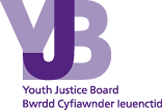AssetPlus: assessment and planning in the youth justice system
Published 15 October 2014
Applies to England and Wales
1. Overview
AssetPlus is a new assessment and planning interventions framework developed by the Youth Justice Board (YJB) to replace Asset and its associated tools. AssetPlus has been designed to provide a holistic end-to-end assessment and intervention plan, allowing one record to follow a child or young person throughout their time in the youth justice system.
AssetPlus focuses on professional judgement of practitioners and will enable better-focused intervention plans to improve outcomes for children and young people.
You will be able to use AssetPlus through:
• YOT case management systems and
• eAsset, the YJB case management and sentence planning system for the secure estate and the YJB Placement Service
YJB National Standards require you to use AssetPlus.
Read the AssetPlus rationale for more information on the research behind AssetPlus.
2. Timescales
The AssetPlus deployment list reflects the dates that each YOT will begin using the AssetPlus framework with young people. This list will be updated regularly.
An indication of deployment dates for secure establishments will be communicated in due course.
3. What is included in AssetPlus
View the AssetPlus framework diagram.
The sections included in AssetPlus are:
3.1 Core Section 1: Core Record
Summarises information from the rest of the framework and the wider case management system, including:
- personal information
- parent/carer details
- current and previous offending or anti-social behaviour
- risk of harm, serious risk of harm and risk to the young person
- record of contact with other services
- details of the young person’s personal circumstances
- summary of key actions from the intervention plan
3.2 Core Section 2: Information Gathering
Collects information to explain the young person’s situation or behaviour, including:
- Personal, Family and Social Factors
- living arrangements and environmental factors
- parenting, family and relationships
- young person development
- learning, Education, training and employment
- Offending/anti-social Behaviour
- current offending
- patterns and attitudes
- other behaviours of concern
- Foundations for Change
- resilience, goals and attitudes
- opportunities
- engagement and participation
- factors affecting desistance
- Self-assessment
- questionnaires for young person and parents/carers
3.3 Core Section 3: Explanations and Conclusions
Practitioners will pull together and analyse elements of the Information Gathering section to make judgements about the young person in four main areas:
- explaining offending behaviour patterns and trends based on the young person’s individual context
- considering potential future behaviour, its likelihood and impact
- use 1 and 2 alongside an indicative rating of reoffending to determine the likelihood of reoffending rating and Risk of Serious Harm rating
- making a professional judgement about the likelihood and impact of adverse outcomes in relation to the young person’s safety and well-being
3.4 Core Section 4: Pathways and Planning
Supports practitioners to identify outcomes and plans that link to risks and positive factors identified in the Explanations and Conclusions section:
- outlines judgements made in the assessment alongside an indicative Scaled Approach Intervention Level
- frames the young person’s intervention plan around what can or needs to be done to deliver 5 key outcomes:
- repairing the harm (Restorative Justice)
- not reoffending
- not hurting others
- goals and life opportunities
- safety and well-being
- outlines targets and actions that will seek to deliver the intended outcomes
- highlights areas where there is a need for referral and gives consideration to engagement, risk, safety management and changing circumstances
3.5 Modules
Support specific tasks/processes to be carried out during a young person’s involvement with the youth justice system:
- Referral and Restorative Justice modules support intervention planning in terms of making a referral or assessing the suitability of restorative justice work
- Pre-Sentence and Referral Order Report modules are templates of these reports that can be populated with assessment information
- Bail and Remand module identifies how to address the objections to bail and determine the most appropriate bail package
- Custody and Leaving custody modules provides information in relation to admission and arrangements for release from custody
- Youth to Adult and YOT to YOT modules facilitate the transfer of AssetPlus between youth justice/adult services and between YOTs
Read the AssetPlus model document for more information on what is included in each section of the framework.
4. Implementing AssetPlus
AssetPlus will be delivered in a phased approach to YOTs in England and Wales in three tranches, followed by secure establishments.
Each organisation has been asked to nominate a local change lead (in YOTs) or point of contact (in secure establishments) who will take ownership for the local implementation of AssetPlus alongside the AssetPlus project team.
4.1 Direct engagement
Direct engagement is the period of business change activity which YOTs will undertake in the 6 – 7 months before technical deployment of AssetPlus in YOT case management systems. YOTs will be directly supported by the AssetPlus team throughout this period, and will be provided with a number of tools and documents to help plan and track their progress at a local level. Business change advisers from the project will be in touch with change leads prior to direct engagement to introduce themselves and the required materials.
The local implementation plan outlines the business change activities and when they will take place.
A similar approach will be taken with the secure estate.
Early Skills Development
Organisations can identify at a local level where assessment and planning skills gaps occur and begin to address these using existing local materials.
Assessment and Planning Foundation Training
The Foundation Training is a general resource which should be used by youth justice practitioners to consolidate their knowledge of assessment and planning interventions in line with the relevant theory and research base. It also introduces how AssetPlus will support this.
This training is available to YOT and Secure Estate practitioners on the Youth Justice Interactive Learning Space on the YJ Resource Hub.
5. Contact information
assessment@yjb.gsi.gov.uk

